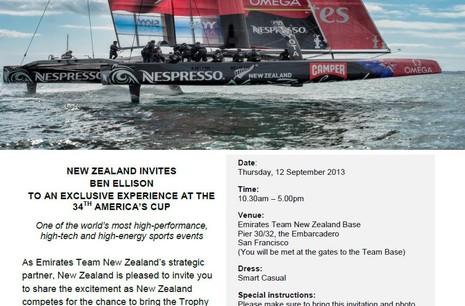Panbo at AC34, photo tweeting
 Best ticket ever? I’m so excited about getting slightly behind the Americas Cup 34 scene — and out on San Francisco Bay for races 6 and 7! — that I’m dreaming up things might go wrong. Could there be too much wind to race? In race 4 both boats averaged 31 knots — with bursts to 45 — in winds that averaged 19 with peak gusts at 23. Obviously things can really wrong when a catamaran is going that fast while delicately balanced on relatively tiny lifting foils. Or might Oracle Team USA find some way to delay further as crew and/or boat changes are hotly rumored?…
Best ticket ever? I’m so excited about getting slightly behind the Americas Cup 34 scene — and out on San Francisco Bay for races 6 and 7! — that I’m dreaming up things might go wrong. Could there be too much wind to race? In race 4 both boats averaged 31 knots — with bursts to 45 — in winds that averaged 19 with peak gusts at 23. Obviously things can really wrong when a catamaran is going that fast while delicately balanced on relatively tiny lifting foils. Or might Oracle Team USA find some way to delay further as crew and/or boat changes are hotly rumored?…















